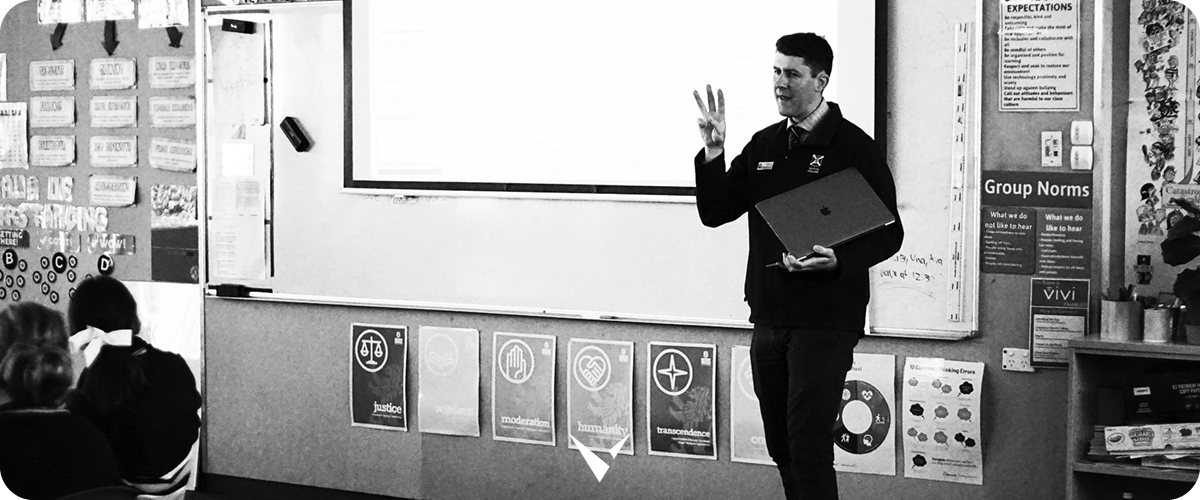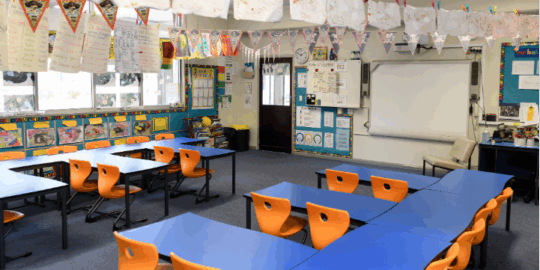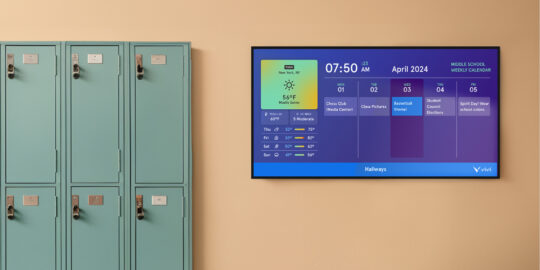
As more and more schools worldwide start to embrace the subject of student engagement, we take a look at what exactly that means and why it’s so important. We also look at the impact teacher relationships have on student performance and identify strategies, environmental considerations, and the technology required to enable effective collaboration.
Introduction
Five hundred years ago, Shakespeare wrote of a schoolboy ‘… creeping like snail unwillingly to school.’ It’s hard to imagine what awaited the poor boy when he arrived because schooling has changed so much in the time since. But one thing has remained relatively constant: school children don’t, as a rule, trot eagerly to school.
As recently as 2005, a survey of 81,000 US high-school students confirmed as much. Three-quarters of respondents said the material they were learning was not interesting; two-thirds said they were bored in class every day, and just under one third said they were bored because of a lack of interaction with teachers.
There is clearly work needed to capture, nurture, and maintain students’ interest in the subjects they are studying. Student engagement is seen by many as a priority, and collaboration between teacher and student is seen as a significant step towards unlocking its benefits.
What is student engagement?
The definitions of student engagement vary, though an engaged student is generally considered to be one who: shows attention to the area of focus, participates actively in learning, and spends the right amount of time on task. Typically, it encompasses three dimensions: behavioural, emotional, and cognitive engagement. Each is influenced by a variety of elements in the learning environment, including the school community, the presence of adult role models, a student’s peers, the type of instruction, and the curriculum itself.
What does the research tell us about student engagement?
There is evidence of a strong correlation between engagement and achievement. Of the three types of engagement shown in the section above, behavioural engagement is the most likely to impact results.5 Studies have shown that the more attentive students are in class and the more time they spend focused on the task at hand, the better they perform. In other words, students who pay more attention in class perform better.
Research has also shown that when students are engaged in the learning process, it increases their focus and attention and pushes them to adopt higher-level critical-thinking skills. The question is, how to encourage them to do so?
What are the benefits of student engagement?
Multiple research studies have shown that students who are engaged not only achieve higher academic results but are also more likely to persist through struggles with their school work, have better social skills, and are less likely to drop out of school.
In contrast, disengaged students show lower cognitive performance, disruptive behaviours, and emotional problems. They avoid academic tasks and have increased absenteeism, dropout rates, and problems with learning.8
Interestingly, the level of disengagement increases as children grow older. In lower grades, 80 percent of students are engaged. By the time those same children hit high school, that number falls to 40 percent.8
There is also evidence that increased engagement can reduce anxiety in college students, particularly when the right active learning practices are implemented. And getting it right is essential; the fear of negative evaluation can raise the heart rates of even the most prepared student when a teacher poses a direct question.
Adopting an engaging approach
Governments across the globe have accepted the evidence. The US Department of Education recognises student engagement as a key element in creating a positive school climate and acknowledges its links to academic achievement. In Australia, New South Wales has made clear its preference for cultivating a culture of engagement.
In neighbouring state, Victoria, student engagement is mandated in education policy. Each school is expected to have a student engagement policy that supports the creation and maintenance of, among other things, positive and engaging cultures and safe and supportive environments.
The trend towards collaboration
To date, there is plenty of evidence that collaboration between teachers leads to better job satisfaction, delivers important emotional and psychological benefits, and improves competence. It has also been shown to have a positive effect on student achievements.
The concept of teacher-student collaboration is relatively new. As such, there’s not yet a significant body of evidence to support it directly. However, the American Psychological Association makes it clear that students who have ‘close, positive, and supportive relationships with their teachers will attain higher levels of achievement’. Research by the University of New South Wales concurs. A 2019 study showed that ‘the more positive relationships students had with their teachers, the better their engagement [and participation] in school’.
There is undoubtedly widespread global acknowledgment that if today’s students are to develop the skills they will need for future success, there needs to be a shift from knowledge-only education to developing creative problem-solving skills, collaboration, resilience, agility, compassion, and respect. These skills need to be taught and reinforced; something teachers can do by providing opportunities for practice and positive reinforcement.
As such, schools, education districts, and departments worldwide are embedding collaboration into their approaches to learning.
How schools are enabling collaboration
Good teacher-student relationships are one of the keys to student engagement. Evidence shows that where they exist, students tend to succeed, and teachers can intervene effectively if problems arise.[20] This section looks at which strategies, environmental considerations, and technology solutions are being adopted and addressed.
Strategies
In its Practice Principles for Excellence in Teaching and Learning, the Victorian Government describes a positive climate for learning as one in which the following exist:
- High expectations for every student promote intellectual engagement and self-awareness. The belief is that this lifts the intrinsic motivation of students and leads to improved outcomes.
- A supportive and productive learning environment promotes inclusion and collaboration. The theory is that when a teacher maintains a safe, supportive and inclusive learning environment, students will be more motivated, collaborative and productive.
- Student voice, agency and leadership empower students and build school pride. When students are empowered as learners and leaders, actively contributing to their own education and whole-school initiatives, their self-efficacy is enhanced. They experience significant growth in motivation, well-being, and achievement.
According to the George Lucas Educational Foundation, one of the most valuable gifts a teacher can give to their students is time.[22] They recommend a number of strategies to build better relationships, including learning names quickly and correctly to prevent students from feeling marginalised or invisible, assigning seats and changing them often, finding small ways to connect, and simply listening.
US not-for-profit educational organisation, ASCD, adds an important point about content. It is their view that students won’t be deeply engaged unless they can find a meaningful use in their lives for the content they are expected to learn. After all, in the words of Harvard Professor David Perkins, ‘Knowledge is for going somewhere, not just accumulating.’[24]
Environmental considerations
Classrooms have historically been designed for the communication of information from one to many. The teacher is usually positioned front and centre, as are the various media they access. But as schools begin to embrace strategies to improve student engagement in the classroom, the limitations of the traditional layout are becoming apparent.26
Innovative Learning Environments are emerging. They bring flexibility to teaching and to the use of spaces, furniture and technology. That’s important because there are times when students need very specific instructional learning and times where they should be encouraged to collaborate in small or large groups.
New school buildings are being designed with collaboration in mind. In the case of West Lake Middle School—in the Humble Independent School District, Texas—the concept of a ‘building without walls’ led to the construction of unique, functional spaces in which students could really interact and engage.
Similar approaches are being taken to new builds elsewhere in the world. When it constructed a new School of Management, the University of Bath set out to create an exciting space that delivered a 21st Century learning and research environment. The areas it incorporated into the plans were designed to enable effective teamwork and support the University’s key philosophies of engagement, education, and collaboration.
Technology
A focus on the right approach and the right environment will only go so far. Today’s teacher needs to be far more mobile if they are to collaborate effectively with students. Access to the right technology is therefore essential.
If the whiteboards, data points, electrical sockets, televisions, and projectors are all set up for a teacher to lecture from the front of a class, it is challenging to set the teacher free. As such, making informed decisions about networks and investment in technology is critical.
More and more schools are pushing towards education technology (EdTech). Wireless presentation solutions like Vivi improve teacher productivity and turn the classroom into an interactive, collaborative learning space—driving increased student engagement and productivity.
Not only does the use of systems like this in the classroom provide opportunities for interaction between students, but it also unshackles teachers from the front of the class and allows them to connect with students in a way that their predecessors simply could not.
Conclusion
There is significant evidence that greater student engagement delivers better academic outcomes and reduces anxiety. In addition, there is a global acceptance that teacher-student collaboration is an effective way to boost student engagement.
The task now falls on schools, education departments, and districts to deliver it by implementing the right strategies, environments, and technology.



